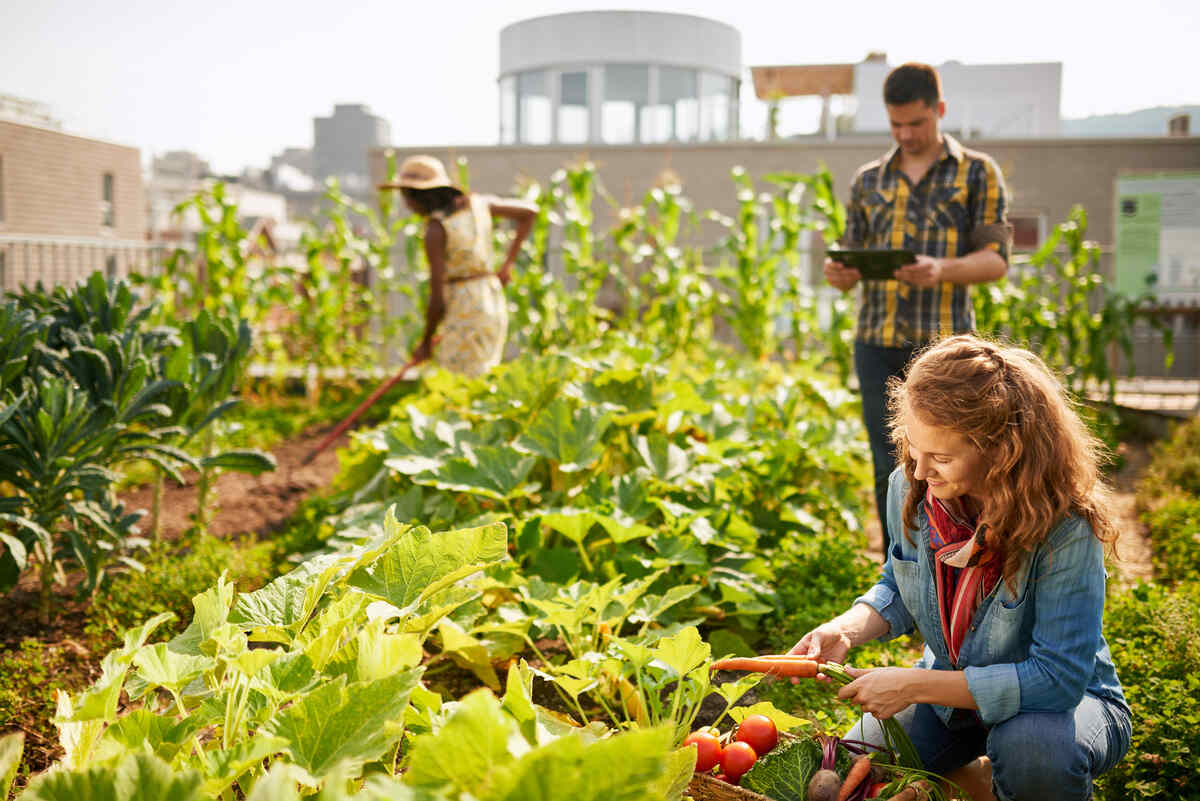City Blooming - The Facts
City Blooming - The Facts
Blog Article
The smart Trick of City Blooming That Nobody is Discussing
Table of ContentsThe Facts About City Blooming UncoveredNot known Facts About City BloomingThe Definitive Guide for City BloomingWhat Does City Blooming Mean?Unknown Facts About City Blooming
Interested in expanding food to buy in the City of Chicago? Believing regarding starting a neighborhood garden? Modifications to the Chicago Zoning Ordinance enable agricultural usages like area gardens and urban ranches in many components of the city. Below is a list of regularly asked questions pertaining to the policies and guidelines that farmers must take into consideration when planning a city agriculture task.
The zoning change does not customize any type of other codes managing composting, structure licenses, buying or renting City had building, organization licenses or ecological contamination. There are existing codes that control these concerns and they stay in full effect and might be applicable to your task. Area yards are usually had or handled by public entities, civic companies or community-based organizations and maintained by volunteers.
Urban ranches expand food that is planned to be offered, either on a nonprofit or for-profit basis. Due to their commercial objective, urban farms need an organization permit. Yes. A neighborhood yard is enabled to market excess produce that was expanded on website if the sales are accessory or subordinate to the garden's primary purpose defined over.
10 Easy Facts About City Blooming Explained
The amount of garden compost product can not surpass 25 cubic backyards at any provided time according to the criteria in 7-28-715 of the City's Municipal Code. Since the dirt at a lot of new yard websites requires amending, garden compost, soil, wood chips, or various other materials can be gotten to build or boost the expanding space.

If a structure authorization is needed after that the hoophouse will certainly be thought about an accessory building. You can discover more about the building license demands by speaking to the Department of Structures. The 25,000-square-foot dimension limitation is intended to stop a solitary neighborhood yard from dominating a provided block or taking away from the block's existing domestic or commercial character.
The limit does not relate to gardens located in Public Open Space (POS) areas. Can there be greater than one neighborhood yard that is 25,000 square feet on a solitary block? Yes. The size limitation puts on individual gardens, not to private blocks. No. Fencing is not called for, nonetheless, gardens that have big vehicle parking locations might be required to set up secure fencing or various other landscaping functions.
Excitement About City Blooming
B1 & B2 districts call for that all commercial use tasks be carried out inside your home. R districts limit industrial activity. The policies show the objective and intent of the Zoning Code. Is fence required for city ranches? Yes. Fences might be needed, together with landscaping and screening, for particular parking locations and exterior job or storage areas depending on location and the read this article specific task happening.
Urban ranches call for structure permits and zoning authorizations prior to building and construction (indoor plants). Various other types of city testimonial may be required depending on certain structures, activities, dimension, landscaping, licensing, public health and stormwater administration issues.
The Department of Organization Matters and Customer Protection can help establish the certain type of service certificate that's called for. Off street car parking is needed for many industrial tasks in Chicago. The needed number of parking areas is based on the number of workers functioning on site and not the square footage of the growing area.
All About City Blooming

Yes. An urban farm can sell compost material produced on site, nevertheless, the procedure has to follow the policies in 7-28-715 of the Chicago Municipal Code. Yes. Aquaponic systems are enabled inside on urban farms in lots of zoning areas. A zoning review and building permit is required in order to install structures or systems and a company license is needed as defined over.
Up to 5 hives or colonies of honey bees might be maintained as an accessory use. Beekeepers need to sign up with the Illinois Division of Agriculture. For more details about the recommended zoning change you may call the Division of Housing and Economic Growth, Bureau of Planning and Zoning at 312.744.8563.
, which takes area in country locations at the edge of suburbs.
The Definitive Guide for City Blooming
, that look for to form social networks started on a shared ethos of nature and community holism. These networks can develop by method of formal institutional assistance, ending up being integrated right into neighborhood town preparation as a "change town" movement for lasting urban growth.
Some of the initial proof of urban agriculture comes from Mesopotamia.
Report this page